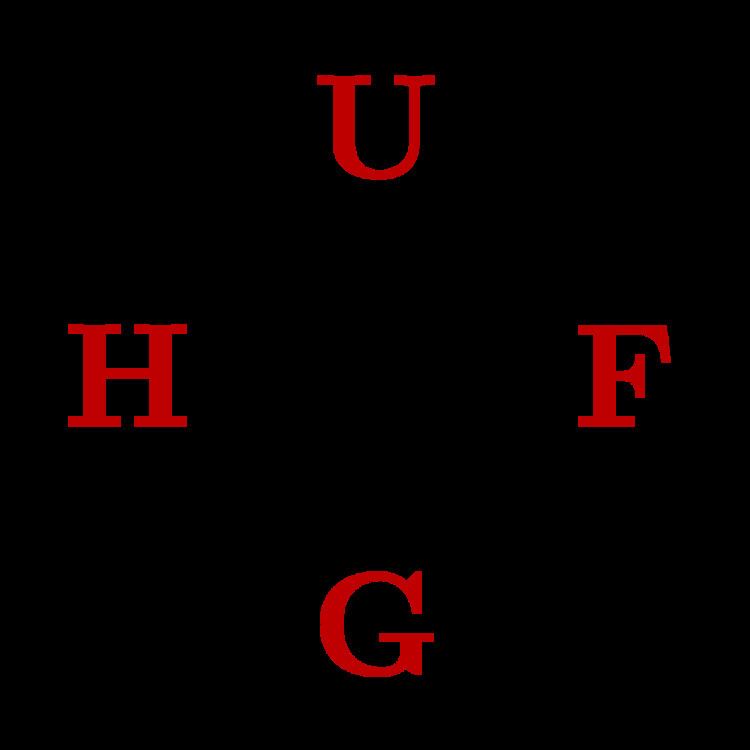 | ||
The thermodynamic square (also known as the thermodynamic wheel, Guggenheim scheme or Born square) is a mnemonic diagram attributed to Max Born and used to help determine thermodynamic relations. Born presented the thermodynamic square in a 1929 lecture. The symmetry of thermodynamics appears in a paper by F.O. Koenig. The corners represent common conjugate variables while the sides represent thermodynamic potentials. The placement and relation among the variables serves as a key to recall the relations they constitute.
A mnemonic used by students to remember the Maxwell relations (in thermodynamics) is "Good Physicists Have Studied Under Very Fine Teachers", which helps them remember the order of the variables in the square, in clockwise direction. Another mnemonic used here is "Valid Facts and Theoretical Understanding Generate Solutions to Hard Problems", which gives the letter in the normal left-to-right writing direction. Both times A has to be identified with F, another common symbol for Helmholtz' Free Energy. To prevent the need for this switch the following mnemonic is also widely used:"Good Physicists Have Studied Under Very Ambitious Teachers". One other useful variation of the mnemonic when the symbol E is used for internal energy instead of U is the following: "Some Hard Problems Go To Finish Very Easy".
Use
The thermodynamic square is mostly used to compute the derivative of any thermodynamic potential of interest. Suppose for example one desires to compute the derivative of the internal energy
- Place oneself in the thermodynamic potential of interest, namely (
G ,H ,U ,F ). In our example, that would beU . - The two opposite corners of the potential of interest represent the coefficients of the overall result. If the coefficient lies on the left hand side of the square, a negative sign should be added. In our example, an intermediate result would be
d U = − p [ Differential ] + T [ Differential ] . - In the opposite corner of each coefficient, you will find the associated differential. In our example, the opposite corner to
p would beV (Volume) and the opposite corner forT would beS (Entropy). In our example, an interim result would be:d U = − p d V + T d S . Notice that the sign convention will affect only the coefficients and NOT the differentials. - Finally, always add
μ d N , whereμ denotes the Chemical potential. Therefore, we would have:d U = − p d V + T d S + μ d N .
The Gibbs–Duhem equation can be derived by using this technique. Notice though that the final addition of the differential of the chemical potential has to be generalized.
The thermodynamic square can also be used to find the Maxwell relations. Looking at the four corners of the square and making a
Finally, the potential at the center of each side is a natural function of the variables at the corner of that side. So, G is a natural function of p and T,and U is a natural function of S and V.
